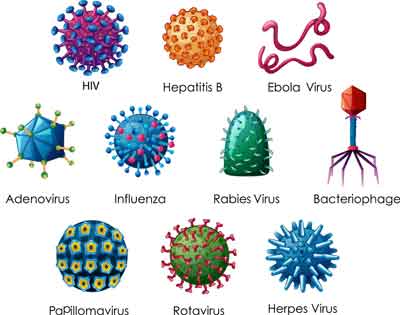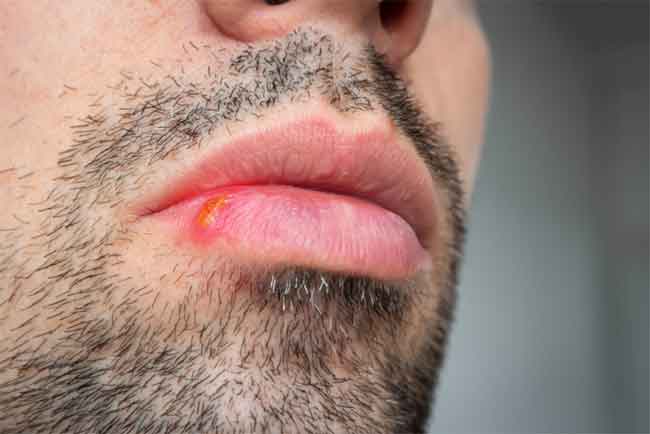Herpes simplex virus is of two types which are quite similar in most aspects except for their preferred tissue localization:
- Oral herpes, or Type I Herpes simplex [HSV1]
- Genital herpes, or Type II Herpes simplex [HSV2]
The major modes of transmission of both forms of HSV are either sexual contact or skin-to-skin contact. Hence HSV1 may be transmitted just by kissing an infected person, whereas HSV2 would be transmitted on genital contact with an infected person. Infections typically manifest as lesions on the skin. Infections can also be latent, in which the lesion subsides but the virus continues to live, usually within the sensory nerve cells of the infected person. Such a person remains a carrier of the virus for life, which may again flare up into a full fledged infection in response to stress or immuno-suppression. Hence, once infected with HSV, the person can never be fully “cured” of the infection. Any available treatment can only reduce the severity of the lesions and decrease duration of the active infection, visit website.
Laboratory Diagnosis of HSV1

The following lab tests are available to diagnose HSV1
- Viral Culture Test: The duration of this test is around 10 days. Fluid samples from an active HSV1 lesion are collected, usually within the first three days of appearance of the lesion. The virus is then cultured from the fluid using specific growth media and optimal growth conditions. Appearance of vial colonies (called plaques) is indicative of presence of the virus and number of such plaques give an idea of the severity of the infection. Accuracy of this test is adversely affected in case of very severe cases of infection.
- PCR (Polymerase Chain Reaction) Test: This is a rapid test, usually producing results within two days. Fluid is collected from lesions and a “PCR” is performed on it to detect viral DNA. The PCR test is highly sensitive and can detect very low levels of the virus.
- Serology Test: A serology test involves collecting a blood sample from the patient and testing for presence of antibodies to HSV in it. It relies on the fact that the body’s immune system would generate antibodies to HSV on infection, and such antibodies are highly specific. One can also easily distinguish between HSV1 and HSV2 using this test. Results are usually given in less than three days. But as generation of antibodies by the body’s immune system takes time, with peak response occurring in the timeframe of a few months, this test holds good only in the later stages of the disease or in confirmed cases, and not in the initial diagnosis of the infection.
- Tzanck Smear Test:This is one of the earliest tests for HSV1. Scrapings of the lesion are collected and examined microscopically for signs of viral infections. This test is less accurate as the virus per se is not detected, and there is a high amount of operator variability involved.
